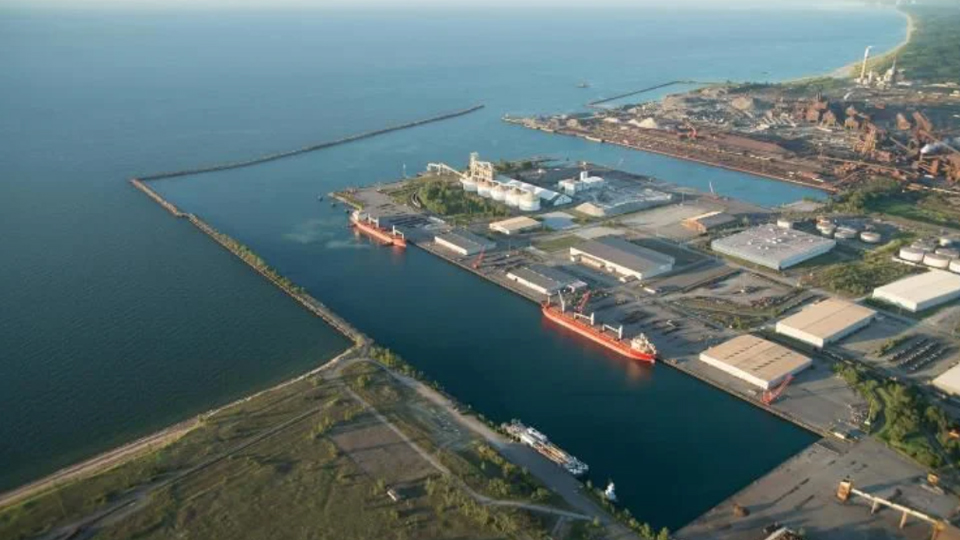Ports of Indiana approved for container terminal at Burns Harbor
Subscriber Benefit
As a subscriber you can listen to articles at work, in the car, or while you work out. Subscribe Now
The Ports of Indiana is already taking positive steps forward just weeks after launching its Indiana Container Initiative.
The port authority announced Tuesday that U.S. Customs and Border Protection has approved a proposal to establish the first international sea cargo container terminal on Lake Michigan at the Ports of Indiana-Burns Harbor.
The new terminal would create the only all-water container route for ocean vessels to serve the greater Chicago metropolitan area via the Great Lakes, the Ports of Indiana said in a news release.
Ports of Indiana CEO Jody Peacock said having the terminal could create transformational opportunities, but it will take time to develop.
As part of the effort, the port authority will be responsible for constructing a CBP container cargo examination facility at the port, which would include a CBP office, equipment, furnishings, large scale non-inspection equipment, and radiation portal monitors.
Peacock said the port won’t be able to schedule regular container shipments until the Customs facilities are fully operational. Construction is expected to take place in 2025.
Port Director Ryan McCoy said while the venture comes with major challenges, the project is a top priority.
“Great Lakes shipping is limited by a shorter shipping season and the use of smaller vessels, but the potential upside for handling containers is tremendous,” McCoy said. “Allowing ocean carriers to start serving this market could diversify supply chains, avoid bottlenecks and reduce the overall carbon footprint for shipping to and from the Midwest.”
In June, the Ports of Indiana announced the launch of the Indiana Container Initiative, which sought to explore the development of multiple international container terminals throughout the state, including at Indiana’s three ports and at various inland locations.
Currently, all containers moving through the Chicago market travel by rail or truck. The port authority said having a container terminal at Burns Harbor will allow shippers access to the largest metro area on the Great Lakes.
“We’re working with several businesses that have strong interest in using a regular liner service to Burns Harbor, and the initial container projections are promising,” said Ian Hirt, a maritime consultant working with the port to develop container business. “This will likely be a niche service that offers specialized amenities, such as refrigerated containers or a green alternative, but it could also help avoid bottlenecks and improve supply chain reliability.”
The port authority said it has received letters of support from other Great Lakes ports, including Cleveland and Duluth, which also handle container vessels.
The Ports of Indiana-Burns Harbor is the 25th largest U.S. port and handles 25 million tons of cargo annually, generating nearly $17 billion in annual economic impact.
